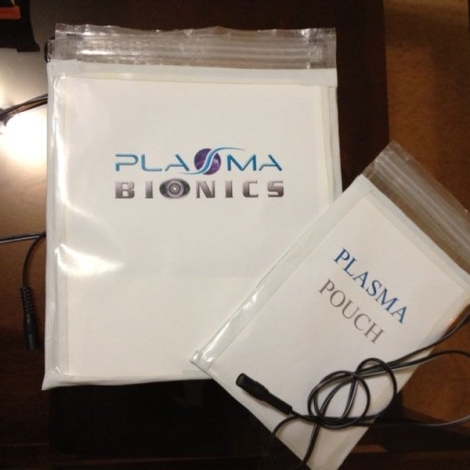
A device that fills plastic bags with non-thermal, room-temperature plasma could sterilize medical instruments in developing countries, but the R&D team behind it has a few questions, first. Kedar Pai, Anuashka Sharma and their colleagues at Oklahoma State University in Stillwater, Oklahoma, have asked for our community’s feedback on their medical instrument sterilizer. Here are the details.
The situation:
Medical instruments have to be disinfected between uses. Tools such as scalpels, drainage bags, blood culture tubes, even implants that will be used again and so on can transmit infectious disease between patients if they are not cleaned well. According to international guidelines, these instruments should be sterilized, not just washed. The usual way to do it is with an autoclave, which heats and pressurizes the instruments in a pressure chamber that destroys any microbes that might remain after washing.
The problem:
Traditional autoclaves require large amounts of electricity to generate heat and pressure, and in the past they have also been expensive. These machines are impractical in off-grid medical clinics or health centers in areas that experience frequent blackouts. They’re costly to buy, costly to operate and may end up failing to work if the power goes out.
The proposal:
The OSU team’s new device converts air into plasma that fills special proprietary plastic bags, kind of like locking sandwich bags, where technicians place the medical instruments. The plasma sterilizes the instruments in the bag.
The device will be battery powered or use a wall plug-in adapter. It will have a touch screen interface, and the bags can be reusable and cost little to replace, the team says.
Making their case:
The interesting thing here is that plasma, the so-called fourth state of matter, is often very hot, but this device creates it at room temperature. That means that it requires less power than some thermal autoclaves. It also means that this machine can sterilize certain plastics and other materials that cannot withstand high heat and pressure, which is helpful for a lot of newer instruments.
Another advantage, the OSU team says, is that technicians can store their instruments in the bag after sterilization to keep them hygienic until the moment when they’re ready to go to work.
The bags can also come in different sizes to accommodate the range of instruments that might need sterilization.
The OSU team guesses that their device could cost roughly $1900, which is less than some commercial autoclaves. Compared to other autoclaves, their device could also save money in electricity and maintenance costs, the team says.
The questions:
The OSU team has asked our community for feedback. These are their questions.
- We are trying to tailor our device based on third world country’s needs. We need your suggestions and contacts.
- We also need data on how many procedures are performed on average by the doctors, how many sterilization devices are required for one visit etc. And if you do not have this information on hand, would you please direct us to the person who would be able to?
The competition:
If medical centers or even aid groups are going to buy this device, it has to outperform a few options that are already out there. Solar autoclaves beat this device in power savings and in cost.
We ran this idea past Jose Gomez-Marquez, who designs medical devices for affordability at MIT’s Little Devices Lab. He points out that old-fashioned autoclaves are cheap these days. Following his lead, we found an 18-liter model for $250, a more heavy-duty model of a similar size for $600 and smaller, no-doubt flimsier models that run as little as $50.
Jose Gomez-Marquez’ take:
Besides considering the cost and the competition, the OSU team has to test their device in the field, Gomez-Marquez says.
“I can tell you that siting in Oklahoma it will be hard to validate the device. They need to go and test and play and try things out. Specs go out the door in many cases, as you know,” Gomez-Marquez says.
This device might solve important problems in developing world clinics. Or it might not. More research is needed.
Our first design principle is to develop appropriate solutions, not technologies. A common mistake that R&D teams can make is to develop a technology and then search for problems that it can solve. Some of the really effective designs, on the other hand, were created only after the developers lived with the people who use them, immersed themselves in the cultural context of the users and then made something that solves the problems that the people themselves want to solve.
Otherwise, your technology is a hammer looking for nails, as Gomez-Marquez says.
Talking about the plasma sterilizer, Gomez-Marquez says: “If they are serious about it they will travel, they will find stakeholders and they will find out of this has legs.”
Share your knowledge
We shared one person’s take, and we’re interested in hearing from others. Your comments are welcome and we will make sure that the OSU team sees them. And please feel free to communicate directly with the team through their website.

